If you're intrigued by Japan’s unique food culture, you've likely heard about mochi (餅), a delightful culinary treat that's steeped in tradition and versatility. This versatile rice cake has a myriad of uses, from festive dishes to everyday snacks, and the most beloved type of mochi in Japan is undoubtedly Kirimochi.
What is Kirimochi?
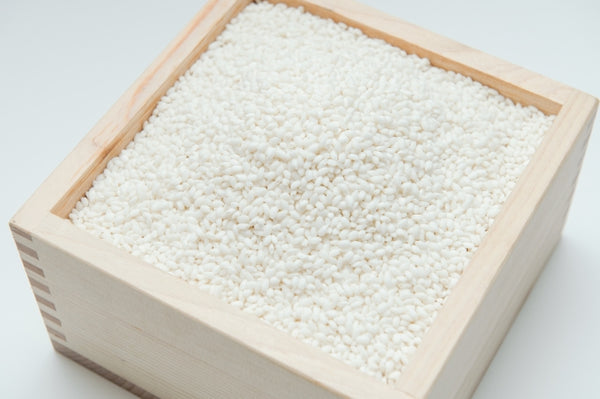
Short-grain glutinous rice called mochigome. Photo by photoAC
Kirimochi (切り餅), or cut mochi, is your ordinary mochi but shaped into small, flat rectangles or squares. Mochi is made from a type of short-grain glutinous rice known as mochigome (餅米), which is painstakingly soaked, steamed, and pounded until it becomes a soft, chewy mass. Once this mass is formed, it can be shaped into kirimochi blocks, which are then left to dry, preserving them and extending their shelf life.
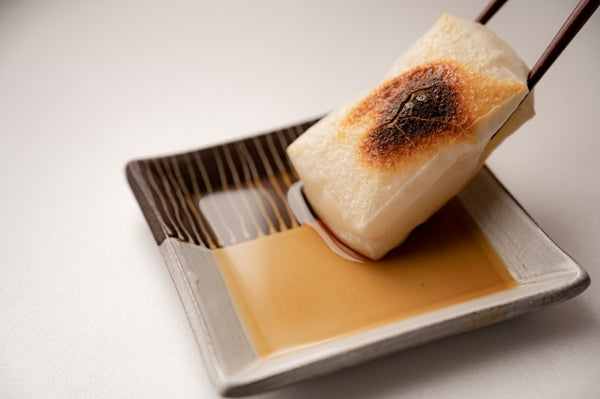
Photo by photoAC
The beauty of kirimochi lies in its simplicity and versatility. With its mild, subtly sweet flavour and delightfully chewy texture, kirimochi can be used in a wide range of dishes, from savoury soups and stir-fries to sweet desserts. It's a beloved staple in Japanese households, a food item that's deeply ingrained in the culinary and cultural fabric of Japan.
History of Kirimochi
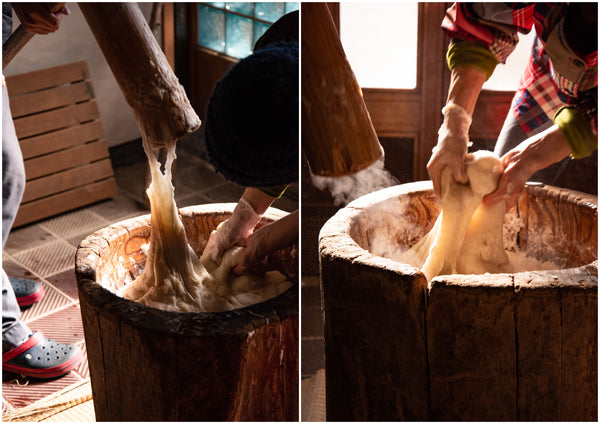
The traditional art of mochitsuki | Photo by Pakutaso
The tradition of making and eating mochi, including kirimochi, dates back to the Yayoi Period (300BC–300AD) in Japan, where it played a vital role in religious ceremonies and offerings. Mochi was seen as a symbol of purity and was offered to the gods to gain their favour. It was also believed to contain the spirit of the rice plant, making it a sacred food in Shinto rituals.
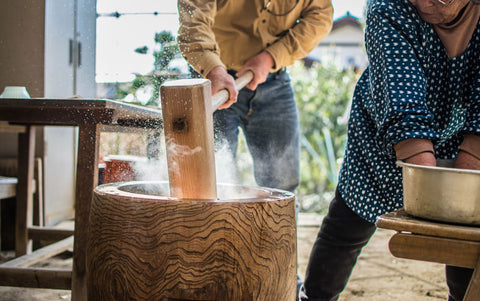
Mochitsuki | Photo by Pakutaso
The process of making kirimochi, or any mochi for that matter, used to be a labour-intensive task that required the collective effort of the community. This age-old tradition, known as mochitsuki (餅つき), involved soaking the rice overnight, steaming it, and then pounding it with wooden mallets in a ceremony filled with joy and camaraderie.
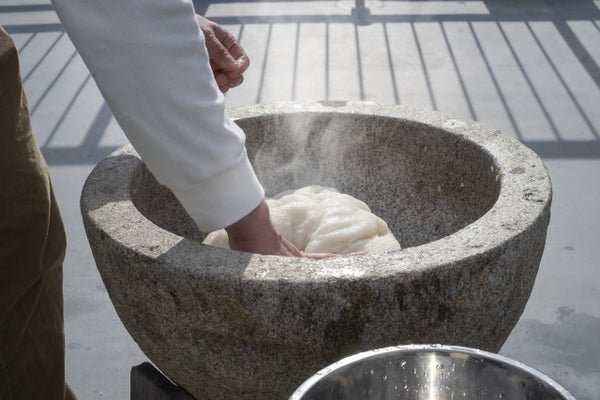
Piping hot glutinous rice ready to be pounded into mochi | Photo by photoAC
In today's modern world, mochitsuki is mostly carried out during special occasions. The invention of machines has made it easier to produce mochi on a large scale, allowing people to enjoy kirimochi and other types of mochi anytime they like. Despite these modern conveniences, the traditional art of mochitsuki is still treasured and practiced today, serving as a poignant reminder of Japan's rich history and culture.
When Do People Eat Kirimochi?
In everyday life, kirimochi is consumed as a versatile ingredient in home cooking. It's an easy way to add substance and chewiness to a meal, making it a favourite in dishes like nabe (鍋 hot pot).
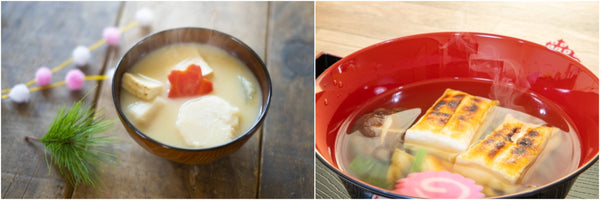
Varieties of ozoni typically consumed during Shogatsu | Photo by photoAC
While kirimochi can be enjoyed year-round, there are specific occasions when its consumption becomes more prevalent. For instance, during the New Year's festivities, it's common to find kirimochi in ozoni (お雑煮), a special soup that varies by region but always contains mochi. This dish is eaten as the first breakfast of the year, symbolizing longevity and well-being.
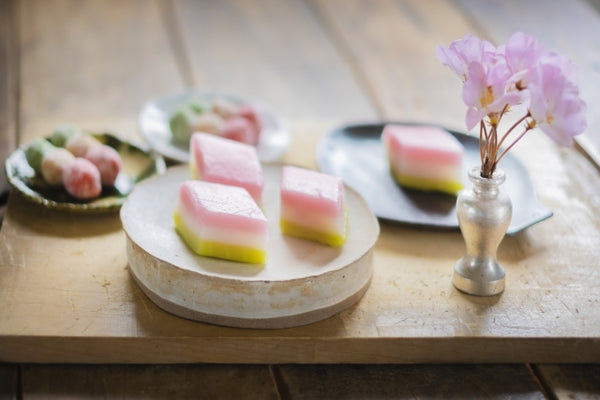
Hishi-mochi | Photo by photoAC
Another occasion is the Doll's Festival or Hina-matsuri (ひな祭り), celebrated on 3rd March every year. Families with young daughters mark this day by setting up a display of ornamental dolls, and hishi-mochi (菱餅), a diamond-shaped colorful mochi, is prepared. Though it's not kirimochi per se, the spirit of mochi pervades this celebration of health and happiness for girls.
Where Can I Buy Kirimochi?
 Freshly-cut kirimochi | Photo by photoAC
Freshly-cut kirimochi | Photo by photoAC
In Japan, kirimochi can be found everywhere from supermarkets to convenience stores. It's typically sold in vacuum-sealed packages, ready to be cooked and enjoyed at home. Each package contains several blocks of kirimochi, which are usually individually wrapped for convenience.
For those living outside of Japan, kirimochi can be found in Japanese or Asian grocery stores, often in the frozen food section. If physical stores aren't accessible, don't fret—many online platforms sell kirimochi and ship worldwide, ensuring that everyone can get a taste of this delightful Japanese treat!
Ways to Cook Kirimochi
Kirimochi is incredibly easy to prepare, and its chewy texture and mild flavor make it a versatile addition to many dishes. Here are a few ways you can cook kirimochi:
- Grilled or Pan-fried Kirimochi: This is the simplest and most straightforward method. Just grill or pan-fry the kirimochi until it puffs up and turns golden brown. The result is yakimochi (焼き餅), a crispy exterior with a gooey, chewy interior—an irresistible combo! Enjoy it with a drizzle of sweet soy sauce, a dusting of kinako (きな粉 roasted soybean flour), or a dollop of anko (あんこ sweet red bean paste).
- Boiled Kirimochi: You can also boil kirimochi, which gives it a softer, stickier texture. This method is commonly used when adding kirimochi to hotpots like soup and stews.
- Baked Kirimochi: Another fun way to cook kirimochi is by baking it in the oven. This method takes a bit longer, but it results in a uniformly golden and slightly crispy kirimochi.
No matter which cooking method you choose, remember to watch the kirimochi carefully, as it can go from perfectly cooked to burnt in a matter of seconds!
Ways to Eat Kirimochi
After cooking your kirimochi, there are countless ways to enjoy this versatile food. Let's explore some popular options:
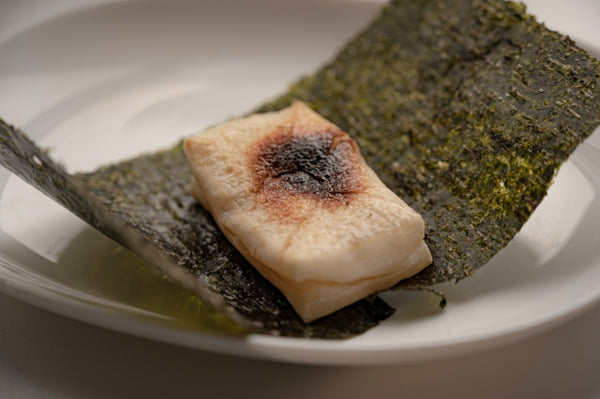 Photo by photoAC
Photo by photoAC
Isobeyaki (磯部焼き): A popular way to enjoy kirimochi is to make Isobeyaki—grilled kirimochi wrapped in nori (seaweed) and brushed with soy sauce. The salty, umami-rich seaweed pairs wonderfully with the chewy, subtly sweet kirimochi.

Photo by photoAC
Zenzai (ぜんざい): In this sweet treat, kirimochi is added to zenzai, a warm, sweet red bean soup. It's a comforting dish that's especially popular during the cold winter months.
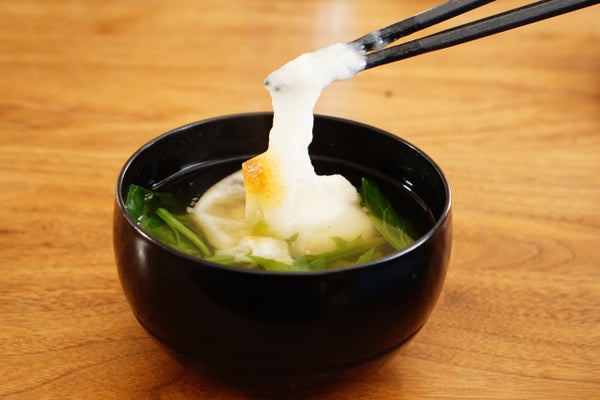 Photo by photoAC
Photo by photoAC
Ozoni (お雑煮): As mentioned earlier, ozoni is a traditional soup eaten during the New Year celebrations, featuring kirimochi as a main ingredient. The soup can be soy-based or miso-based, and the ingredients can vary greatly depending on the region.
“We Love You So Mochi”
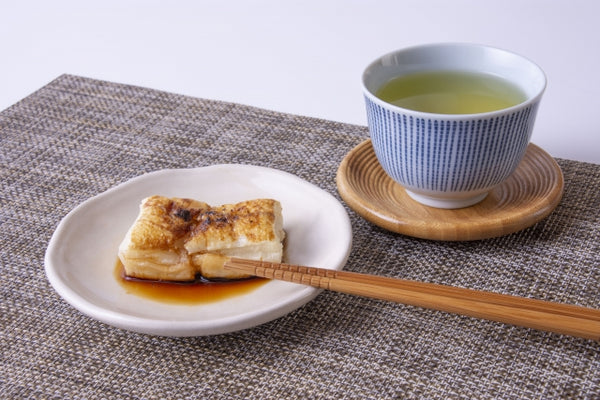
Photo by photoAC
Whether you're a longtime lover of Japanese cuisine or a newcomer eager to explore, kirimochi is a must-try food that embodies the soul of Japanese culinary tradition. It's a simple yet versatile ingredient, one that can bring joy and satisfaction in every bite, be it sweet or savoury.
Kirimochi's deep roots in Japan's history, its cultural significance, and its role in various festivities make it more than just a food item—it's a symbol of Japan's respect for tradition, community, and the simple pleasures of life. Whether you're savouring a piece of freshly grilled kirimochi, relishing a warm bowl of zenzai, or enjoying a festive meal of ozoni, you're participating in a culinary tradition that spans thousands of years.
With so many ways to cook and enjoy kirimochi, your culinary adventure is just beginning. Each recipe presents a chance to create something delicious, warming your belly and your heart with every bite.
Mochi Snacks and More by JAPAN RAIL CLUB
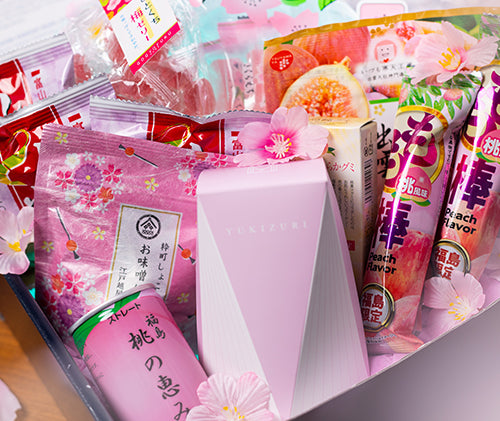
If you'd like to dive deeper into the world of Japanese cuisine, why not consider subscribing to a Japanese Snack Box? Curated by JAPAN RAIL CLUB, these boxes offer a taste of Japan's seasonal delights, delivering a selection of high-quality snacks and ingredients right to your doorstep. From the classic flavours of mochi and senbei to other seasonal delights, each box is a culinary journey through Japan's rich and varied food culture.
Embrace the world of kirimochi today, and discover the delicious possibilities of Japan's versatile rice cake and cuisine! Remember, every bite is a taste of history, a moment of joy, and a celebration of the simple, comforting pleasures of food. Happy munching!

























































